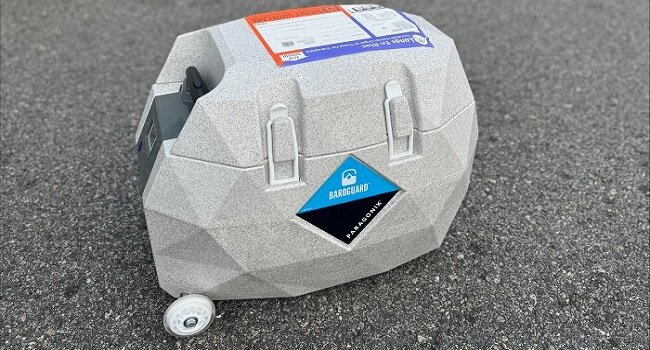Hospital & Healthcare Management had an insightful conversation with Dr. Lisa Anderson, Founder & CEO of Paragonix Technologies, regarding their innovative BAROguard™ Donor Lung Preservation System. Dr. Anderson provided a comprehensive overview of the BAROguard™ system and its key features, emphasizing its role in enhancing and standardizing the preservation and transportation of donor lungs.
1. Can you provide an overview of the BAROguard™ Donor Lung Preservation System and its key features?
The BAROguard™ Donor Lung Preservation System is designed to enhance and standardize the preservation and transportation of donor lungs on their journey from donor to recipient. The device works by connecting the donor lungs to an airway management system that maintains optimal pressure ranges throughout the entire preservation period. The device actively maintains the airway pressure of the donor lungs at the International Society of Heart & Lung Transplant (ISHLT) consensus range of 12-15cm H20 and 4-8°C. BAROguard™, like other Paragonix organ preservation devices use GPS and Bluetooth technology, which allows transport teams on the ground to track the location and status of the donor lungs in real-time.
2. How does the BAROguard™ system address the challenges associated with maintaining optimal conditions for donor lungs during transport?
The process of preserving organs today is variable. Variability comes from surgical preference, constrained by time and resources, and unmeasurable with the current tools available for transplant teams. BAROguard aims to standardize key preservation parameters of airway pressure and temperature. Airway pressures can vary at the time of procurement and change throughout preservation. This variability may lead to suboptimal conditions for the donor lung, impacting its likelihood of success after implantation into the recipient. Too high of an airway pressure, that can be incurred during procurement or during airplane takeoff (similar to a bag of chips) can lead to risk as a result of overstretching the tissue. Low airway pressure, that can be incurred during procurement or landing may lead to injury commonly associated with collapsed lungs.
3. What sets the BAROguard™ system apart from traditional methods of lung preservation?
In traditional methods of lung preservation, the process often involves placing the organ in an ice cooler filled with crushed ice. While this method has been used for years, it has significant drawbacks. One of the main challenges is the inability to control or monitor the temperature inside the container effectively. As a result, there’s a higher risk of the lungs being subjected to improper conditions during transit. This outdated approach can lead to damage to the lungs by the time they reach the recipient, impacting the success of the transplant and potentially the long term survival of the transplant recipient.
The BAROguard™ system stands out from traditional lung preservation methods due to its advanced capabilities in regulating both pressure and temperature during transport. Unlike traditional methods, the BAROguard™ system ensures precise control over these crucial factors, with the intent to provide improved outcomes in lung transplant procedures and increase the number of lung transplants.
4. Could you share any insights or success stories from the BAROguard™ system’s initial deployments at leading thoracic transplant centers?
Experience from early adopters of the technology has been highly encouraging. The transplant community intuitively understands the need to control airway pressures from practice of managing patients on ventilators. What the BAROguard system allows the transplant teams to do now is provide an unprecedented level of control and real-time monitoring during preservation. As a result, BAROguard has been used for transcontinental cases, for lungs that needed a higher level of preservation, and for lungs that needed additional support due to the constraints during the organ procurement surgery. We serve transplant centers that – after just a single clinical utilization of BAROguard device – have communicated their intent to convert all their lung preservation strategies using BAROguard. Another center has reported that the quality of the donor lungs visually improved following preservation in the BAROguard system. I think we are just scratching the surface of what is possible with this technology, especially given it takes less than 5 minutest to setup the system and fits well into the existing workflow for transplant.
5. How do you envision the widespread adoption of the BAROguard™ system influencing the landscape of organ transplantation?
Every donor organ is a life-saving gift that should be treated with the utmost care. We have seen the impact that preservation can have on the viability of donor organs, and every effort must be made to safeguard their integrity throughout the journey and ensure that they reach the recipient in the best possible condition for a successful transplant. Products like BAROguard™ are instrumental in achieving this goal. By utilizing advanced preservation systems and emphasizing the importance of safe organ transport, we can significantly reduce the risks associated with organ damage and maximize the chances of successful transplant outcomes. The aim of these devices is to provide healthcare professionals control over variables, like temperature and pressure, that to date have been uncontrollable, in an effort to provide better care for their patients.

6. What role do you foresee technology playing in further advancements in organ preservation and transplantation?
Technology will continue to be the driving force behind further advancements in organ preservation and transplantation. Innovations like the BAROguard™ system are paving the way for more precise and effective methods of safeguarding donor organs during transport. As we harness the power of technology, we can enhance organ viability, streamline transplant procedures, and ultimately improve patient outcomes, bringing us closer to a future where organ shortage is no longer a barrier to life-saving treatments.

















